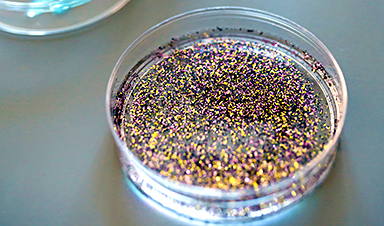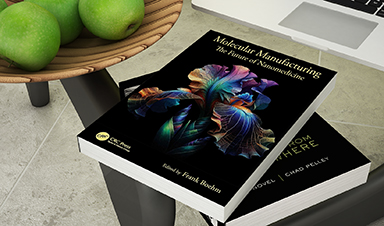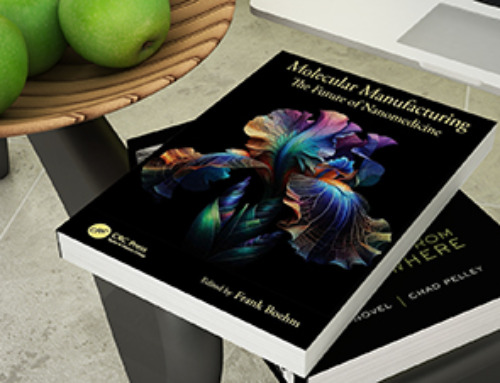Human brain samples collected at autopsy in early 2024 contained more tiny shards of plastic than samples collected eight years prior, according to a preprint posted online in May. A preprint is a study which has not yet been peer-reviewed and published in a journal.
"The concentrations we saw in the brain tissue of normal individuals, who had an average age of around 45 or 50 years old, were 4,800 micrograms per gram, or 0.5% by weight," said lead study author Matthew Campen, a regents' professor of pharmaceutical sciences at the University of New Mexico in Albuquerque.
That increase, however, only shows exposure and does not provide information about brain damage, said Phoebe Stapleton, an associate professor of pharmacology and toxicology at Rutgers University in Piscataway, New Jersey, who was not involved in the preprint.
"It is unclear if, in life, these particles are fluid, entering and leaving the brain, or if they collect in neurological tissues and promote disease," she said in an email. "Further research is needed to understand how the particles may be interacting with the cells and if this has a toxicological consequence."
The brain samples contained 7 to 30 times more tiny shards of plastic than samples from the cadavers' kidneys and liver, according to the preprint.
"Studies have found these plastics in the human heart, the great blood vessels, the lungs, the liver, the testes, the gastrointestinal tract and the placenta," said pediatrician and biology professor Dr. Philip Landrigan, director of the Program for Global Public Health and the Common Good and the Global Observatory on Planetary Health at Boston College.
"It's important not to scare the hell out of people, because the science in this space is still evolving, and nobody in the year 2024 is going to live without plastic," said Landrigan, who was not involved with the preprint.
"I say to people, 'Listen, there are some plastics that you can't escape. You're not going to get a cell phone or a computer that doesn't contain plastic.' But do try to minimize your exposure to the plastic that you can avoid, such as plastic bags and bottles."
The American Chemistry Council, an industry association, told CNN that while "some studies on microplastics have recently garnered headlines, just last month the FDA noted, 'Current scientific evidence does not demonstrate that levels of microplastics or nanoplastics detected in foods pose a risk to human health.'
"Research underway not only helps address current data gaps in our understanding of exposure to microplastics but it also aims to develop improved tools to measure the toxicity of microplastics to humans, said Kimberly Wise White, the council's vice president of regulatory and scientific affairs.
"This work is important given the unvalidated methods often applied by researchers which can lead to unreliable or misleading outcomes, the complex nature of microplastics, and the many variables that can affect human health," she said.
Nanoplastics 'hijack' their way into the brain
For the study, researchers examined brain, kidney and liver tissues from 92 people who underwent a forensic autopsy to verify cause of death in both 2016 and 2024. Brain tissue samples were gathered from the frontal cortex, the area of the brain associated with thinking and reasoning, and which is most affected by frontotemporal dementia (FTD) and later stages of Alzheimer's disease.
"Based on our observations, we think the brain is pulling in the very smallest nanostructures, like 100 to 200 nanometers in length, whereas some of the larger particles that are a micrometer to five micrometers go into the liver and kidneys," Campen said.
Nanoplastics are the most worrisome plastics for human health, experts say, because the minuscule pieces can take up residence inside individual cells.
"Somehow these nanoplastics hijack their way through the body and get to the brain, crossing the blood-brain barrier," Campen said. "Plastics love fats, or lipids, so one theory is that plastics are hijacking their way with the fats we eat which are then delivered to the organs that really like lipids — the brain is top among those."
The human brain is about 60% fat by weight, far more than any other organ. Essential fatty acids, such as omega 3s, are key to the strength and performance of the brain's cells. Since the human body can't produce essential fatty acids on its own, they must come from food or supplements.
Diet is the main route of exposure for micro- and nanoplastics, said Landrigan, who is the lead author of a March 2023 report from the Minderoo – Monaco Commission on Plastics and Human Health, a global consortium of scientists, health-care workers and policy analysts charged with following plastics from creation to final product.
In that report, the consortium determined plastics are associated with harms to human health at every single stage of the plastic lifecycle.
"Some microplastics are also airborne," Landrigan said. "For example, when people are driving down the highway and their tires are abrading on the surface of the highway, a certain amount of microplastic particles are thrown into the air.
"If you live near the coast, some of the microplastic particles that are in the ocean get kicked into the air through wave action," he said. "So ingestion is probably the dominant route, but inhalation is also an important route."
Plastics with ties to cancer
Polyethylene, which is used in plastic bags, films and bottles and is not biodegradable, was the predominant type of plastic found in tissue samples. It was found in greater quantities in the brain than in the liver or kidney, according to the preprint.
Polyethylene was also the predominant type of polymer found in human and dog testicles, according to an August 2024 study by Campen and his team.
The production of various forms of polyethylene, such as polyethylene terephthalate (PET) plastics, are the biggest contributor to the release of the solvent 1,4-dioxane into the environment, according to industry data collected by Defend our Health, an environmental advocacy group.
"The biggest question is, 'OK, what are these particles doing to us?' Honestly there's a lot we still don't know," Landrigan said. "What we do know with real certainty is that these microplastic particles are like Trojan horses — they carry with them all the thousands of chemicals that are in plastics and some are very bad actors."
By invading individual cells and tissues in major organs, nanoplastics can potentially interrupt cellular processes and deposit endocrine-disrupting chemicals such as bisphenols, phthalates, flame retardants, heavy metals and per- and polyfluorinated substances, or PFAS.
Endocrine disruptors interfere with the human reproductive system, leading to genital and reproductive malformations as well as female infertility and a decline in sperm count, according to the Endocrine Society.
"We have some pretty good indications that microplastics and nanoplastics cause harm, even though we are a long way from knowing the full extent of that harm," Landrigan said. "I would say we have enough information here that we need to start taking protective action."
There are many steps individuals can take to reduce their exposure to plastics and their plastic footprint, experts say.
"It's hard to avoid foods wrapped in plastic film but be sure to take the food out of the plastic wrapping before you cook it or put it in the microwave," Landrigan said. "When you heat plastic, that accelerates the movement of the microplastics out of the wrapping into the food.
Invest in a zippered fabric bag and ask the dry cleaner to return your clothes in that instead of those thin sheets of plastic, suggested the Natural Resources Defense Council, an environmental advocacy group. Bring a travel mug to the local coffee store for takeout and silverware to the office to cut back on plastic cups and utensils.
"Don't use plastic bags when you go shopping. Use a cloth bag or a paper bag or a recycle bag. Try to avoid plastic water bottles, if you can possibly do so," Landrigan said.
A March 2024 study found 1 liter of bottled water — the equivalent of two standard-size bottled waters typically purchased by consumers — contained an average of 240,000 plastic particles from seven types of plastics. Some 90% of those were nanoplastics.
"Use a metal or glass drinking cup instead of a plastic cup. Store your food in glass containers instead of in plastic ones," Landrigan said. "Work in your local community to ban plastic bags, as many communities around the United States have now done. There is a lot you can do."
News
Two New Books From Frank Boehm, NA Founder – To be Released Dec. 2025
Molecular Manufacturing: The Future of Nanomedicine This book explores the revolutionary potential of atomically precise manufacturing technologies to transform global healthcare, as well as practically every other sector across society. This forward-thinking volume examines [...]
What could the future of nanoscience look like?
Society has a lot to thank for nanoscience. From improved health monitoring to reducing the size of electronics, scientists’ ability to delve deeper and better understand chemistry at the nanoscale has opened up numerous [...]
Scientists Melt Cancer’s Hidden “Power Hubs” and Stop Tumor Growth
Researchers discovered that in a rare kidney cancer, RNA builds droplet-like hubs that act as growth control centers inside tumor cells. By engineering a molecular switch to dissolve these hubs, they were able to halt cancer [...]
Platelet-inspired nanoparticles could improve treatment of inflammatory diseases
Scientists have developed platelet-inspired nanoparticles that deliver anti-inflammatory drugs directly to brain-computer interface implants, doubling their effectiveness. Scientists have found a way to improve the performance of brain-computer interface (BCI) electrodes by delivering anti-inflammatory drugs directly [...]
After 150 years, a new chapter in cancer therapy is finally beginning
For decades, researchers have been looking for ways to destroy cancer cells in a targeted manner without further weakening the body. But for many patients whose immune system is severely impaired by chemotherapy or radiation, [...]
Older chemical libraries show promise for fighting resistant strains of COVID-19 virus
SARS‑CoV‑2, the virus that causes COVID-19, continues to mutate, with some newer strains becoming less responsive to current antiviral treatments like Paxlovid. Now, University of California San Diego scientists and an international team of [...]
Lower doses of immunotherapy for skin cancer give better results, study suggests
According to a new study, lower doses of approved immunotherapy for malignant melanoma can give better results against tumors, while reducing side effects. This is reported by researchers at Karolinska Institutet in the Journal of the National [...]
Researchers highlight five pathways through which microplastics can harm the brain
Microplastics could be fueling neurodegenerative diseases like Alzheimer's and Parkinson's, with a new study highlighting five ways microplastics can trigger inflammation and damage in the brain. More than 57 million people live with dementia, [...]
Tiny Metal Nanodots Obliterate Cancer Cells While Largely Sparing Healthy Tissue
Scientists have developed tiny metal-oxide particles that push cancer cells past their stress limits while sparing healthy tissue. An international team led by RMIT University has developed tiny particles called nanodots, crafted from a metallic compound, [...]
Gold Nanoclusters Could Supercharge Quantum Computers
Researchers found that gold “super atoms” can behave like the atoms in top-tier quantum systems—only far easier to scale. These tiny clusters can be customized at the molecular level, offering a powerful, tunable foundation [...]
A single shot of HPV vaccine may be enough to fight cervical cancer, study finds
WASHINGTON -- A single HPV vaccination appears just as effective as two doses at preventing the viral infection that causes cervical cancer, researchers reported Wednesday. HPV, or human papillomavirus, is very common and spread [...]
New technique overcomes technological barrier in 3D brain imaging
Scientists at the Swiss Light Source SLS have succeeded in mapping a piece of brain tissue in 3D at unprecedented resolution using X-rays, non-destructively. The breakthrough overcomes a long-standing technological barrier that had limited [...]
Scientists Uncover Hidden Blood Pattern in Long COVID
Researchers found persistent microclot and NET structures in Long COVID blood that may explain long-lasting symptoms. Researchers examining Long COVID have identified a structural connection between circulating microclots and neutrophil extracellular traps (NETs). The [...]
This Cellular Trick Helps Cancer Spread, but Could Also Stop It
Groups of normal cbiells can sense far into their surroundings, helping explain cancer cell migration. Understanding this ability could lead to new ways to limit tumor spread. The tale of the princess and the [...]
New mRNA therapy targets drug-resistant pneumonia
Bacteria that multiply on surfaces are a major headache in health care when they gain a foothold on, for example, implants or in catheters. Researchers at Chalmers University of Technology in Sweden have found [...]
Current Heart Health Guidelines Are Failing To Catch a Deadly Genetic Killer
New research reveals that standard screening misses most people with a common inherited cholesterol disorder. A Mayo Clinic study reports that current genetic screening guidelines overlook most people who have familial hypercholesterolemia, an inherited disorder that [...]
























